14 min read
The 12 Best Business Books That Made BEMO 3X Revenue in 2020
![]() Brandon Lecoq
on Oct 16, 2020
Brandon Lecoq
on Oct 16, 2020
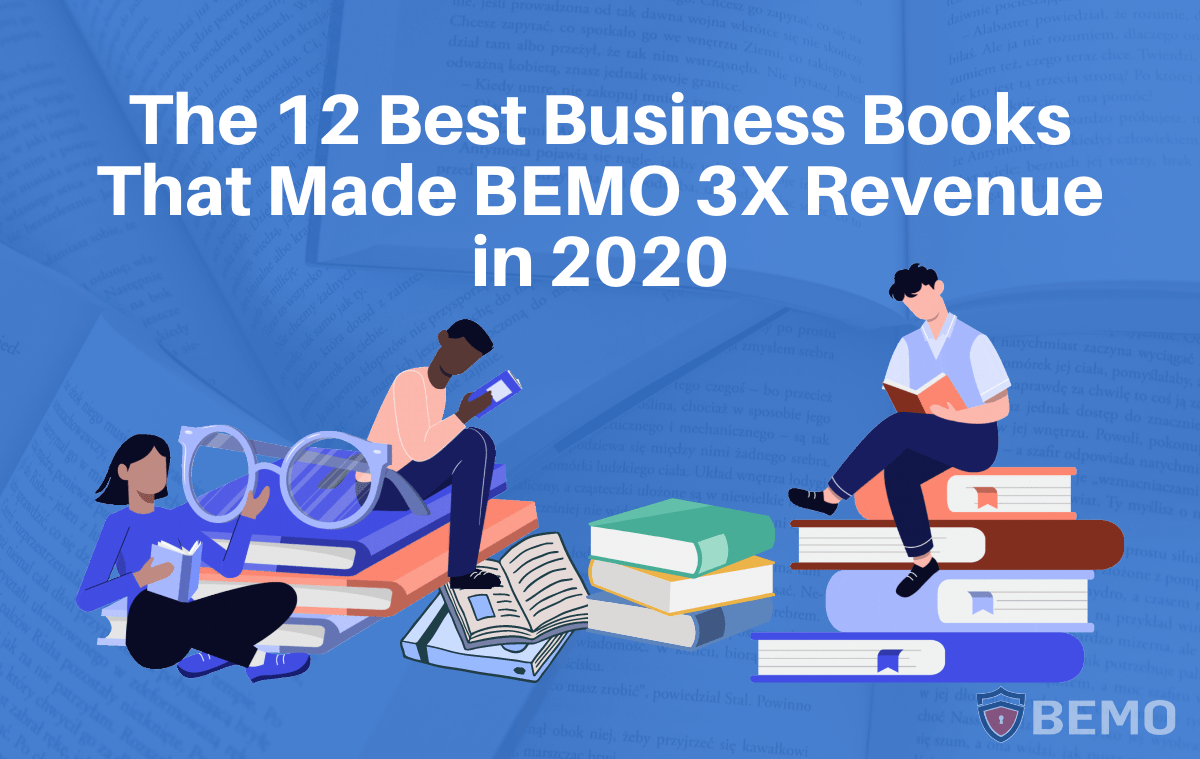
I'm a voracious consumer of books, whether it be reading them or listening to them, I probably consume 2-3 books per month and have done so for several years. I have consumed every popular business book ranging from startups, management, sales, marketing, etc. You name it I've probably read it. Most of these books have one or two key takeaways and the rest is fluff. However, there are 12 books that I keep returning to. 12 books that I've added umpteen sticky notes to, and have dogeared the pages and written comments in the columns. 12 books I often revisit. So, let's revisit them together!
It is honestly the content of these 12 books that have led BEMO to nearly x3 in revenue in 2020 because they have easy to follow, actionable insights that are focused on the following: general business / foundations, marketing, sales, and customer relationships.
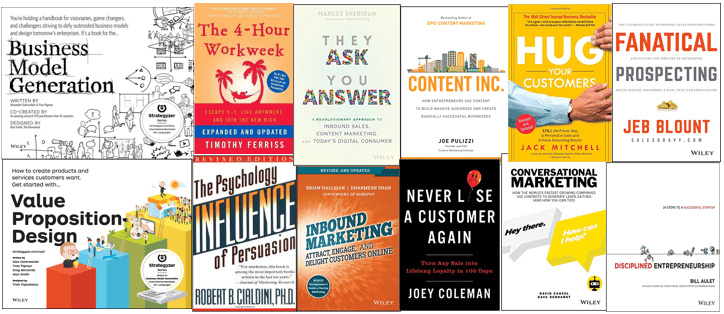
The Best Business Books of All Time
- Business Model Generation
- Value Proposition Design
- Disciplined Entrepreneurship: 24 Steps to a Successful Startup
- The 4-Hour Workweek
- Influence: The Psychology of Persuasion
- Inbound Marketing
- They Ask You Answer
- Content Inc
- Conversational Marketing
- Fanatical Prospecting
- Hug Your Customers
- Never Lose A Customer Again
It's important that you also read them in a certain order, or at least read them by category.
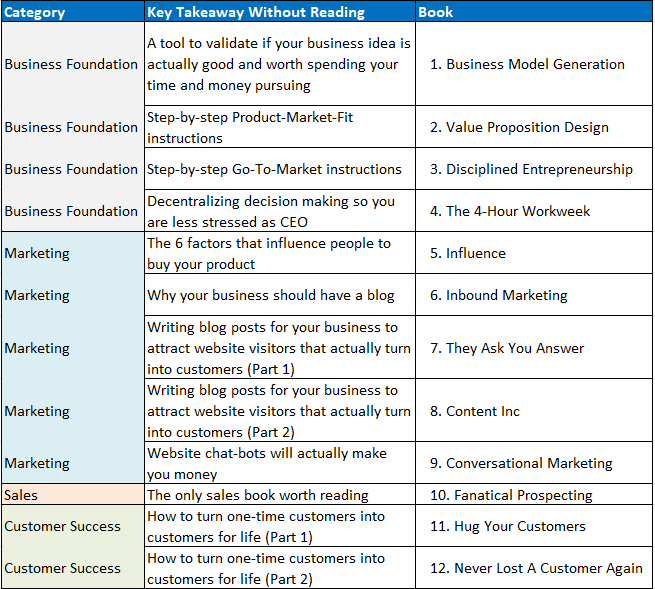
Descriptions of the Top 12 Business Books
Business Model Generation
Authors: Alex Osterwalder and Yves Pigneur
This is the business book I have referenced the most in my career and I personally think it's the most important business book to read (I feel like most people say Lean Startup by Eric Ries is theirs). I was first introduced to this book by Emer Dooley, the Executive Director of Alliance of Angels, the largest angel investing group in the PNW. In 2012 I joined a club at the University of Washington that Emer led called Build Your Own Business (BYOB) club, where people would pitch their business idea using the business model canvas on the white board. We'd then offer constructive criticism and ideas. It was an incredibly useful tool (and the most helpful club) to determine whether you had actually thought about your 'great business idea' or whether it had a ton of holes. This tool alone will save you from potentially starting a new business that never even had a chance had you done this exercise and avoided catastrophe.

That being said, this tool isn't just for startups, it's great at any size business to communicate to any employee what the company does from a 10,000ft view. It's paramount that every employee understands the business model of the company they work for. Who are the partners? Who are the customers? How do we make and spend money? At BEMO we have our own business model canvas and every time we onboard a new employee we send them a copy and walk them through the canvas so that they understand all the moving pieces!
It also helps us at BEMO stay focused. Whenever we think about adding a new service we use our business model canvas as anchor to reference to. Does this service fit in our business model? Is our current business model still valid? Has it changed?
Value Proposition Design
Authors: Alex Osterwalder and Yves Pigneur
This book is actually the sequel to Business Model Generation, in which the authors go one step further to give you the value proposition canvas, an exercise that helps you align your products/services' value props with your ideal customer.
That's gibberish for "does your customer actually need or want your product?". If they align, then you have what's called 'Product-Market Fit' (PMF) a term that, if you're in the startup world you hear about a lot and is slanged around. Achieving Product-market fit basically means you've built a solution that people will actually buy.

Most of the time when companies fail its because they've built a product that no one actually wants or needs and then they build the company's infrastructure around that. By going through this exercise as a company, you will have a better understanding of whether your product/service aligns with your customers' pains, gains, and their jobs.
What's great is that at BEMO we found that our services didn't actually align perfectly with our customers, which gave us the opportunity to fix and fine tune our offerings so that they were irresistible to our ideal customers!
I love this book and Business Model Generation because there is no fluff and it gives you step-by-step instructions that you and your entire team can actually follow, understand, and create actionable insights that will improve your success at building a profitable company. It's not like most books you read where you think 'wow that's one good takeaway but how do I go implement that?', 'how do I get the other team members to be on the same page as me?'.
Disciplined Entrepreneurship: 24 Steps to a Successful Startup
Author: Bill Aulet
Prior to joining BEMO I worked for a boutique Go-To-Market consulting firm in Seattle. What the heck is that? Well, venture-backed startups in the Healthcare space would pay us to bring their products to market and we'd help them get their first customers.
How did we do it? The secret? Our process was 80% based on this book, Disciplined Entrepreneurship. No joke, we followed Bill Aulet's process so closely (we obviously updated aspects to it to make it healthcare specific) for so many clients and built an entire firm around the methodology. It was sometimes surreal to know that all I had to do was read this book and be disciplined in following its instructions and it would produce real results. (In addition to having healthcare experts on staff)

I think this book is especially useful if you first create your business model canvas and then your value proposition canvas and then come to this 24-step process as this one will fill in some gaps from the previous two and show you how to actually go get those customers.
Again this book isn't just for startups. I actually think small and medium businesses are the ones that would benefit most from this as if you've been around for a while and your business is chugging along then you aren't necessarily thinking about these concepts all the time so they are a great reminder to reel you in back into focus.
The 4-Hour Workweek
Author: Tim Ferriss
Ok so this is one of those books where it's a lot of story and the instructions/insights need to be interpreted through the story but the (my) main takeaway is so important that it on my list. I do not think nor expect any of us to only work 4-hour workweeks, but the main takeaway is:
You as CxO need to trust your employees to make important decisions without your knowledge otherwise you cannot scale, the stress will be never end, and you will be the one point of failure when you aren't available. The business should operate smoothly if you go on vacation for two weeks and don't check your emails.
Why is this so important? Well because all my clients are small and medium businesses, mostly in the 50 to 250-employee range and because its something we at BEMO had to go through as well in building our company. If the CEO cannot be completely disconnected for at least 2 weeks then it's indicative of not having a smoothly running operation. The broader takeaway: Being success at your job means you've been able to replace yourself.
If you don't enable your employees to solve their own problems then you will have to do all the fixing and that is so exhausting. This main takeaway comes from a story in 4-Hour Workweek in which the author tell his employees, if the problem can be fixed for $100 or less, then don't bother me with it and just go take care of it, you don't need my permission.
How did I implement this at BEMO for my team? Everyone has a BEMO credit card on my team and if they need something that is $150 or less then they can just go buy it. I just tell them to add the receipt to one of our folders on our share-drive. Whether it's a one-time purchase of $150 or someone wants to test out a new SaaS solution that is $150 or less per month, they can just go for it! This is especially important since we've been remote for 10+ years!
$150 means if you have a broken mouse, keyboard, monitor, you can just go get it. If you need to write a customer a thank you letter or buy them flowers, you can do it. Need to try 1 or 2 seats of some marketing or sales SaaS that you think might be beneficial to BEMO? Well now you can test drive it before deciding "hmm maybe this solution isn't actually that great" I don't need to bother Brandon, or maybe its "Brandon, I test drove this new saas tool that we ought to use for the whole company" and I can look into it.
The benefit that the author makes though is as the manager or the CxO you are mentally free to do the more important activities that approve little expenses that you'd probably approve 99% of the time anyway. Again, no mental clutter.
Needing permission from your boss to spend any money is ridiculous. Give all of your employees more responsibility, come up with some sort of spend limit like $100, $200, $500, $1000 in which your employees can just go to it without asking permission and you will quickly be relieved of so many issues that you previously had to take care of.
If you're thinking to yourself, I can't trust my employee to spend $150 without my permission, then why did you hire them?
Influence: The Psychology of Persuasion
Author: Robert Cialdini
I usually hate books about psychology because often marketers will say something along the lines of, "marketing is easy, you just have to understand human psychology, bro". What does that mean?? That's not even helpful!!! That gives me no place to start, no action items. Psychology is a huge umbrella of study, so I often discard any of those 'marketing psychology' books. This one is different because it's a simple list of 6 factors that help people make a decision. In this case 6 factors that will help influence people to buy my service. They are simple to understand, implement on your website, and most importantly, short enough that you can consistently adhere to all of them!
The 6 weapons of influencing people to buy your service / product:
- Reciprocity
- Commitment and Consistency
- Social Proof
- Likability
- Authority
- Scarcity
I'm not going into detail of all of them because there is a really good medium article that is a 5-minute read that will give you everything you need to know.
How are these helpful for your business or marketing?
Reciprocity
I firmly believe that everything wise has already been said but no one listens!!! How many times, over how many years, and how many ways must we repeat, "do unto others as you have them do unto you"?? It's so simple.
How do we implement this? Well sometimes we scope projects incorrectly, or the customer forgets to include something. Instead asking for more money, we just do it. It's going to take an extra 2 to 3 hours? Boo hoo, just do it. Especially in the IT world, customers do not expect this. Oh and now when you go ask for a referral? It's not so hard to get.
Commitment and Consistency
When you publicly commit to a decision you are more likely to keep that commitment. High school seniors rarely change their commitment after they publicly announce which university they will play football. Stories about grandma and grandpa being married for 40+ years are celebrated because we value commitment. How do you implement this in your business?

At BEMO we've publicly declared our employee benefits roadmap, we promise no marketing emails when you subscribe to our blog, and we say we'll deliver every Sunday, which means Julia is working extra hard to publish those blogs.
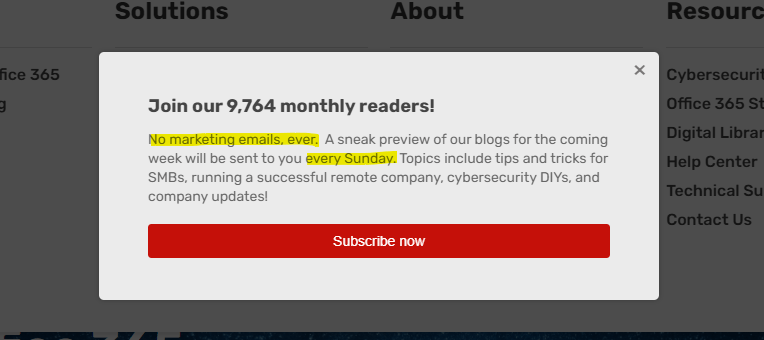
Social Proof
You decide where to eat or what to buy based of Yelp reviews and YouTube videos right? We partnered with Trustpilot, which is essentially the Yelp of B2B and embedded our reviews on our website. The more your customers talk great about you and its easy to find others using your product the easier it becomes to win business.

Likability
If you're on a date and the person's favorite band is your favorite band, do you like them more or less? People like other people who are similar to them, who are attractive, and who compliment them. How do you implement this in marketing?
This is easy when you have really good product-market fit and you've dialed in to your ideal customer. Here's an example, your idea customer is an Accountant for a small or medium business. You look up demographics and you find out that Accountants are white men in their 50s and value consistency and loyalty. So what do you do? Go put some pictures of those people on your website!!! Then go add copy that says "My name is X, I'm 55, and I love (your company) because they are loyal and consistent. It's that easy.

Authority
You listen to a doctor's advice because they went to med school or a scientist because they have a PhD. If you're seen as an expert in your field you don't have to sell, people just listen to you and buy your stuff. How do you implement this? Host a successful podcast for your industry, write a book, and display your advanced credentials on your website.
Scarcity
Exclusivity breeds loyalty. Fraternities? The American Express Black card? Expensive Country Clubs? People love being in a club because they like to feel special and say they have access to something others don't. How do you implement this? Have a VIP group of your highest paying customers, give them access to a CEO roundtable where only 10 of them are invited. It has to be valuable enough that if your customer leaves, they won't have access to it anymore.
Inbound Marketing
Authors: Brian Halligan and Dharmesh Shah
When I first joined BEMO I knew NOTHING about marketing. I am not a marketer. My training was originally as Financial Analyst so I lived in Excel spreadsheets, Oracle Hyperion, and Tableau dashboards. So reading inbound marketing is sort of the Pandora's box and intro to how marketing works today.
Inbound Marketing was written by the people behind HubSpot, which is our CRM, it hosts our website, its our technical support software, its how we track sales, it's basically everything customer related is. Have you used our chat bot? That's HubSpot. Have you been on our website, booked a meeting with us, or read our blog? It's all HubSpot.
If you're interested in how to increase organic website visitors by blogging, check out Nectafy. They have step-by-step blogging instructions that increased BEMO's website visitors from 1,000 to 30,000 per month in 18 months.
If it wasn't for HubSpot as our foundation, there would be NO way we could have scaled our business 3x in 2020.
They Ask You Answer
Author: Marcus Sheridan
For marketers 'inbound' is such an old concept but for those of us that didn't have a career in marketing then inbound is still new to the rest of us, I promise. Inbound Marketing is the book that introduced me to the flywheel methodology and the fact that blogging is great for your business. Now that you know you need a blog, what the heck do you write about?
They Ask You Answer answers this by actually offering detailed advise about how you should tackle a blog, the topics you should write about, the types of blog posts etc... Marcus introduced BEMO to the culture of injecting content into our customer experience and made it way easier along ever part of the process.
Do you get the same sales questions? Well instead of repeating ourselves, now we just drop a link in an email and say "read this". Same technical support questions? "Here's a link for that too". There is literally no way to scale without having the blog posts to give to our leads and current customers. Starting a blog is intimidating because you don't know where to start, and Marcus flushes out the details so that you have a place to start!
The summary? To not send a sales email that is not educational
Content Inc
Author: Joe Pulizzi
OK this is the last book you need to read on blogging. Inbound Marketing introduced me to the idea, They Ask You Answer helps you come up with the list of blog posts to write and tells you to include them in all of your customer interactions, and now Content Inc gets into the details of the blog posts themselves and how to create publishing machine. Now that you have your list of blog posts, how should you actually write them to convert? How do you make sure you actually consistently publish? What will make your blog posts unique and more helpful than someone else's answer?
This book is basically the Go-To-Market step-by-step for blogging for your business.
So did it work? Well it takes a while but after reading this book we wrote our first few blog posts on how to do GoDaddy Migrations to Office 365, Gmail Migration to Office 365, and several 'comparison' blog posts, and 18 months later the GoDaddy post alone has produced $750K worth of new pipeline.
Conversational Marketing
Authors: David Cancel and Dave Gerhardt
Have you ever looked at how many people visit your website on a monthly basis? Is it 1,000 or 5,000 or 10,000 people? Conversational Marketing, which was written by the people behind Drift say, what if you just added a chat bot on your website and gave the opportunity for some of those people to talk to you then and there?
It made a world of a difference at BEMO! As of October 2020 we are experiencing a steady 30,000 people per month, and ever since we started using a chat bot about 100 people per month started talking to us. Sure 100 people isn't a crazy amount compared to 30,000 web visitors but remember, we were talking to literally ZERO of those people before and now we have conversation every day on that chat bot that turn into sales calls, new customers, or just an easier way to talk to technical support.
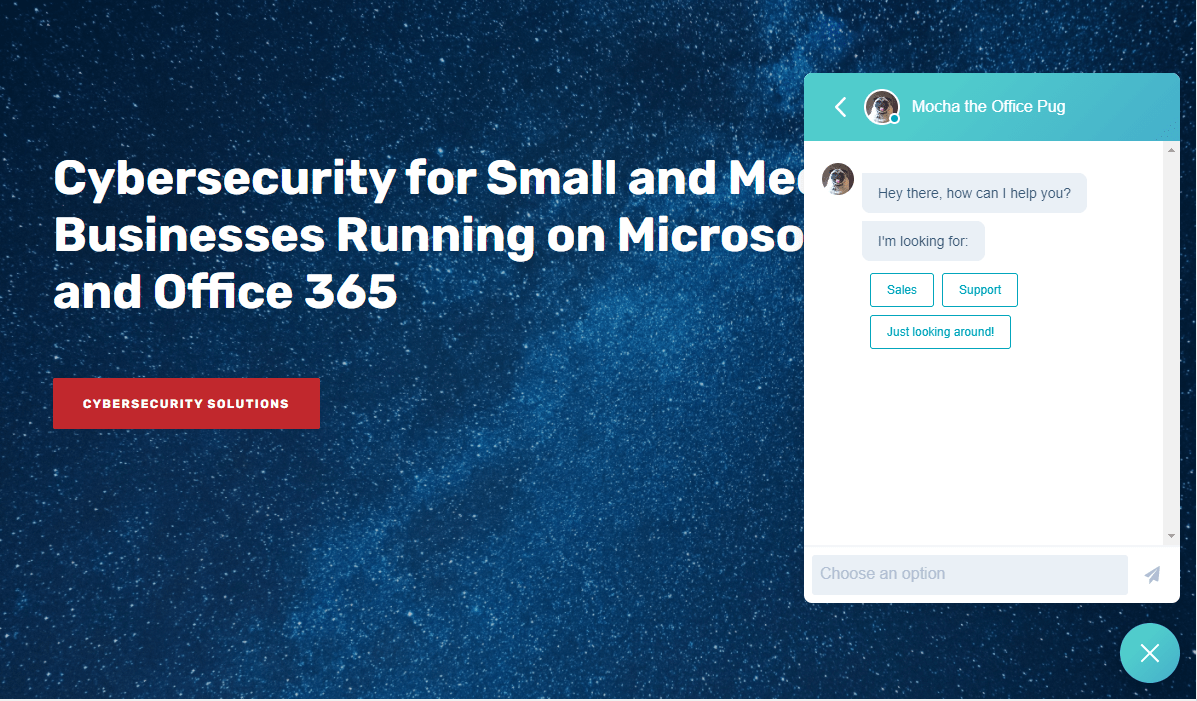
The analogy they make a lot in the book is that you have to think of your website as a clothing store in a mall. Imagine walking into a store (your website) and there is literally no one in the store who works there. Imagine there is no one to help you with product questions, returning an item, or helping you try on clothes? Well that's your website, people are visiting and browsing and they aren't quite ready to pick up the phone but they'd be willing to essentially text you while they work on other stuff.
I highly recommend getting a chatbot and adding it to your website. It's not even expensive to do. If you do want to spend a pretty penny though, there are even advanced chatbot subscriptions that you can pay for that lookup the web visitors IP address and can tell what company you work out - before they even talk to you!!! Imagine going to a website you've never been to and seeing a welcome message like this below! Wouldn't you stick around longer and maybe talk to them?
By the way, shout out to Dave Gerhardt's marketing community, DGMG. Join for like $10 per month and you'll learn a lot of practical marketing advice to implement, not generic marketing fluff.

Fanatical Prospecting
Author: Jeb Blount
This is the only sales book worth reading and will deliver you the cold hard truths about cold calling, sales, and managing your time. In the book the author mentions a tool called Zoominfo, a seemingly expensive sales tool (~$14K) that paid for itself 10x within 12 months when BEMO used to do cold calls and emails.
Outbound sales (i.e. cold calling) sucks and we all hate getting those calls right? Every time we hang up we think "wtf, why do people do this, there's no way it works" Ohhhh but it does, there's a reason why you're still getting those calls. While it takes months or even 2+ years to really start getting leads from inbound, you can get started with outbound almost immediately. If you need to start increasing revenue right now, then outbound is almost the only answer that'll definitely get you there, it's just not the answer we're looking for because its so mentally challenging to do so much outreach.
Jeb tells you how to actually write your outbound emails, how to leave voicemails, the details of social-selling (aka LinkedIn), and the details of how many people you need to call, the metrics, everything!
No joke I bought this book for what, $12? and It resulted in me bringing in $150K+ in revenue, just from me, within 12 months, only 1 hour per day of work. After creating the templates like he told me I did outreach for only about 1 hour per day (emails + calls), that's huge ROI on a book.
Watch the video below for the truth about sales!
Hug Your Customers
Author: Jack Mitchell
The author takes a transactional industry (retail clothing) and turns it into a modern day relationship business and all you have to do is read his book and apply the exact things he does (in his stories) and you'll achieve the same results. It's a long read but he offers so many examples that will get you thinking, "oh my god this is so simple why didn't I think of doing that!". Jack simply executes on a plethora of 'small things' that make it impossible for you to ever shop anywhere else.
Never Lose A Customer Again
Author: Joey Coleman
As a B2B SaaS company Customer Success has become the most important factor of our business as current customers represent the vast majority of our total revenue and new business becomes a smaller percentage over time. Recurring revenue is a beautiful thing for us, so its paramount that we keep it. Joey details in almost step-by-step regarding what any company needs to do to keep a customer for life.
The main idea? An amazing customer experience. How does a person go from marketing to sales to implementation to customer success + technical support in flawless fashion? It's actually really hard to make this experience flawless but there are a few really easy ways we got started:
- Have a CRM? We import the customer's picture, their LinkedIn and Facebook profiles (this is still a work in progress for us, there's lots of customers) But this keep the customer at the center and reminds each of us on the team that the customer is a PERSON not a user, not a number.
- We started collecting CES scores every time a technical support ticket is resolved
- We had marketing interview our customers! Customers were happy to talk to Julia because she is basically an impartial 3rd party and not sales or tech support interviewing them
- We've started building a Customer Success team, and most of our 2021 hires wil be for this team! Why? Because we want our customers for life!
Top 10 Posts
-
Windows 10 Pro vs Enterprise
-
Migrate From Gmail to Office 365: Step-By-Step Guide
-
Windows 10 Enterprise E3 vs E5: What's the Difference?
-
What are the 4 types of Microsoft Active Directory?
-
How to Migrate from GoDaddy to Office 365
-
Google Workspace to Office 365 Migration: A Step-by-Step Guide
-
How to Set Up Office 365 Advanced Threat Protection
-
10 Benefits of Microsoft Teams
-
Top 3 Reasons to Move From Google Drive to Microsoft OneDrive
-
How to remove Office 365 from GoDaddy (tips and tricks)
-2.png?width=1080&height=1080&name=Untitled%20design%20(5)-2.png)



Leave us a comment!